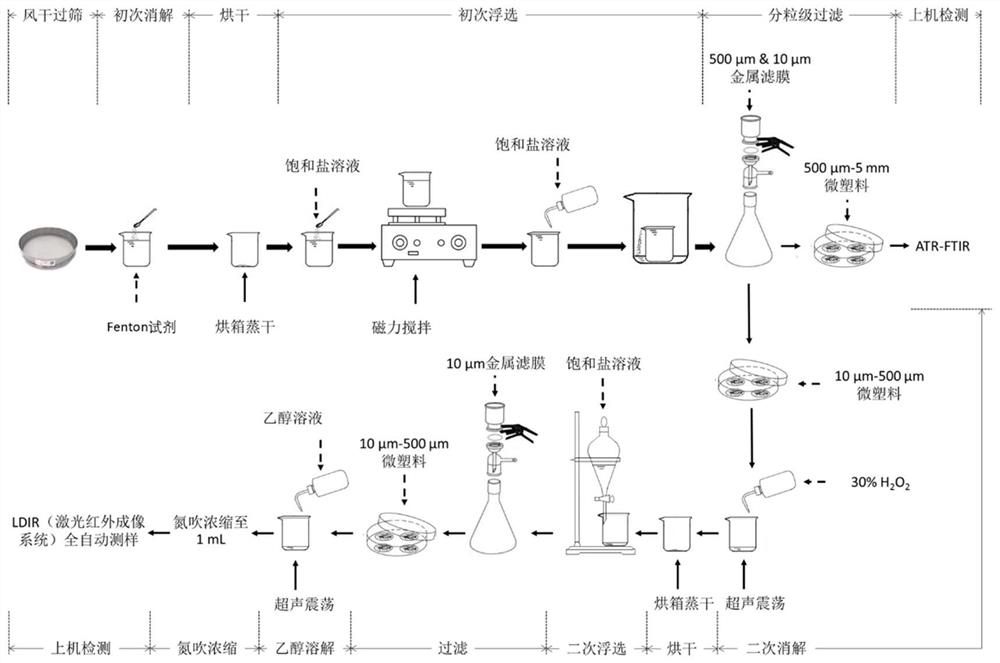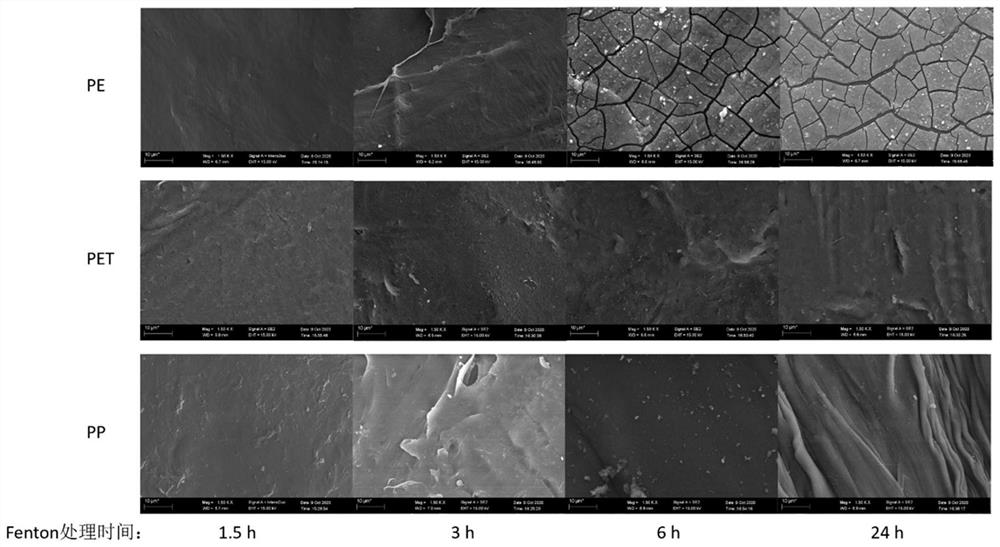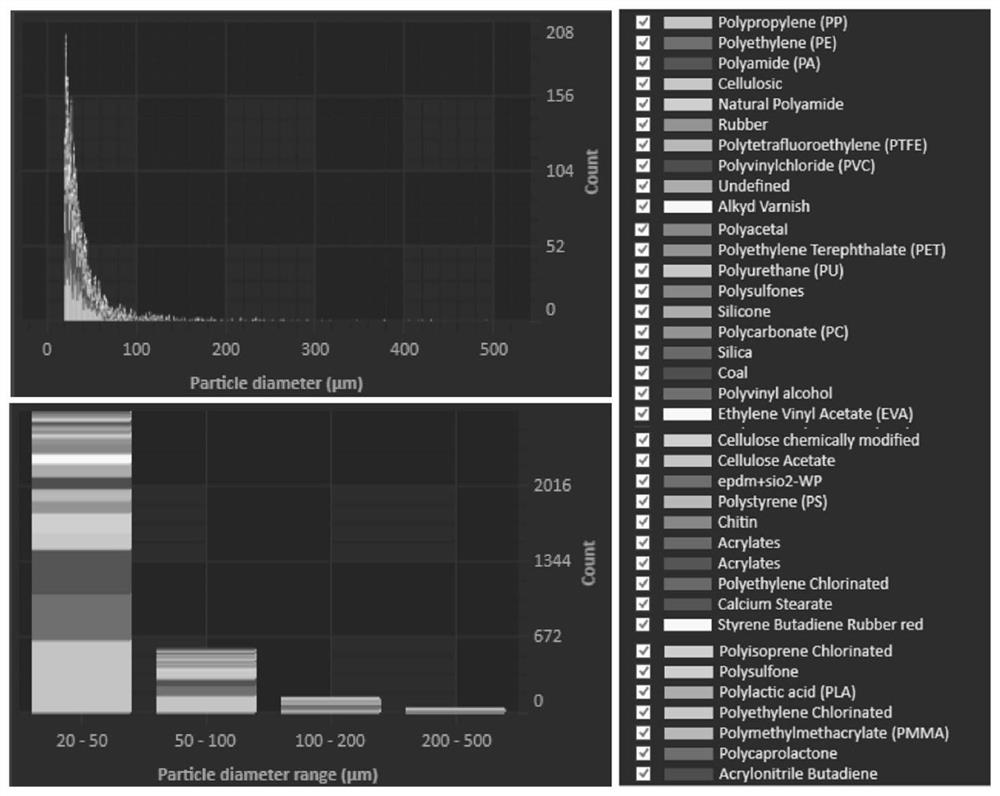Farmland soil micro-plastic detection method
A detection method and technology of microplastics, applied in the field of detection of microplastics in farmland soil, can solve the problems of inability to obtain multiple information such as microplastic particle type, particle size, area, shape, etc. Reduce microplastic pollution, reduce the amount of useless data, and improve the effect of flotation
- Summary
- Abstract
- Description
- Claims
- Application Information
AI Technical Summary
Problems solved by technology
Method used
Image
Examples
Embodiment
[0044] Example Farmland Soil Microplastic Detection Method
[0045] like figure 1 As shown, the basic process of detecting microplastics in farmland soil is as follows:
[0046] Soil sample—air-drying and sieving—primary digestion—drying—primary flotation—fractional filtration to obtain the first filter membrane and the second filter membrane, and the first filter membrane is tested by ATR-FTIR;
[0047] The second membrane - secondary digestion - drying - secondary flotation - secondary filtration - ethanol dissolution - nitrogen blowing concentration - 8700LDIR on-board detection
[0048] Specific steps are as follows:
[0049] 1) Air dry and sieve
[0050] The soil samples were air-dried naturally, taking care to avoid contamination of the samples by microplastics in the air when air-drying, manually grinding the air-dried samples, and passing through a 5-mesh metal sieve.
[0051] 2) Initial digestion
[0052] The soil matrix contains a lot of organic matter, and the ...
PUM
| Property | Measurement | Unit |
|---|---|---|
| particle diameter | aaaaa | aaaaa |
Abstract
Description
Claims
Application Information
 Login to View More
Login to View More - Generate Ideas
- Intellectual Property
- Life Sciences
- Materials
- Tech Scout
- Unparalleled Data Quality
- Higher Quality Content
- 60% Fewer Hallucinations
Browse by: Latest US Patents, China's latest patents, Technical Efficacy Thesaurus, Application Domain, Technology Topic, Popular Technical Reports.
© 2025 PatSnap. All rights reserved.Legal|Privacy policy|Modern Slavery Act Transparency Statement|Sitemap|About US| Contact US: help@patsnap.com



